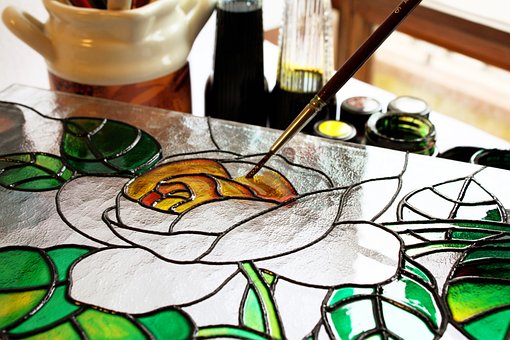How To Cure Acrylic Paint On Glass
Are you looking for tips on how to cure acrylic paint on glass and restore it to its original condition? Whether you are a professional artist or just an enthusiast, this guide will provide you with all the information needed to get your project up and running. As an experienced acrylic paint restoration specialist, I have seen my fair share of projects that have gone wrong due to improper curing techniques. In this article, I will teach you some of the best methods for curing acrylic paint on the glass so that you can avoid any further damage!
The first step in restoring acrylic paint on glass is understanding why proper curing is important. Acrylic paints are water-based and need time to dry completely before they can be considered cured. If not given enough time to properly cure, the paint may never fully harden which could lead to chipping or peeling off over time. Knowing the right way to cure your painting can help ensure that it lasts for years without needing any additional repairs or touch-ups.
Finally, once you understand why curing is essential, it’s then important to learn about different techniques used when working with acrylic paints on glass surfaces. Different types of products such as lacquers, varnishes, and sealants are often necessary depending on the type of surface being painted. With the right combination of tools and supplies, along with some practice and patience, anyone can master the art of curing their own artwork!
Overview Of Acrylic Paints
Acrylic paint is a type of water-based paint that has become increasingly popular among artists and crafters due to its versatility, affordability, and ease of use. It's available in both aerosol sprays and brushes, making it an ideal choice for almost any project. Acrylic paints are highly pigmented, which means they produce vibrant colors with just one coat. They also have excellent adhesion qualities and won't require multiple layers to achieve the desired effect. The downside is that acrylic paints can be difficult to remove from surfaces if mistakes occur or changes need to be made. This article will explain how to cure acrylic paint on glass and discuss the advantages of painting on glass.

Advantages Of Painting On Glass
Well, you've learned about acrylic paints and now it's time to discuss the advantages of painting on glass. Painting on glass can be a great way to express yourself creatively while also preserving memories or creating one-of-a-kind pieces. It's also an easy craft that requires minimal supplies and is suitable for most skill levels.
One advantage of painting on glass is that there are fewer restrictions when compared with other surfaces. You don't have to worry about the consistency of your paint as much because you can spread it more easily than if you were working with wood or fabric. Additionally, since glass doesn’t absorb any moisture from the paint, you'll get brighter colors that last longer - this makes glass an ideal surface for artistic expression!
Another advantage of painting on glass is its versatility. With different techniques like shading, blending, layering, and masking, you can create intricate designs quickly and easily.
The level of detail achievable in a short amount of time makes it possible to produce stunning works without spending too much money or taking up too much space in your workspace. Plus, once dry, the designs won't smudge or fade away over time - so they'll stay beautiful for years to come!
Now that we've discussed some of the benefits of painting on glass let's move on to preparing your canvas for success by prepping your chosen piece of glass before starting your project.
Preparing Glass For Painting
Before beginning to paint on glass, the surface must be properly prepared. This will ensure a smooth and even application of your acrylic paint and make sure it adheres well. Here are four steps I recommend you take when prepping glass for painting:
- Clean the surface with soap and water to remove any dirt or grime before attempting to paint.
- Use a lint-free cloth to dry off the glass completely so no moisture remains.
- Sand down any rough spots on the surface using fine-grit sandpaper until it is smooth everywhere else.
- Apply a coat of primer designed specifically for use on glass surfaces, and let dry completely before applying your desired color(s) of acrylic paint.
Now that we’ve gone over how to prepare glass for painting, let’s discuss the application and drying of paint!

Application And Drying Of Paint
So you thought painting glass would be easy, huh? Well, think again! When it comes to restoring acrylic paint on glass, there's a lot more to consider. We'll take you through the steps of application and drying so that your masterpiece can last lifetimes - or at least until someone decides they want to redecorate their living room.
First off, when applying the paint make sure to use light strokes in one direction. This will help ensure an even finish and prevent any accidental streaks from appearing on the glass surface. If you do happen to get some uneven spots during this process, don't worry! Just use a damp cloth with a bit of dish soap mixed in to gently buff out those areas before moving on. It won't take long for the paint to dry - but it is still important that you wait at least 12 hours before applying another layer of paint.
Now let's talk about drying time. Depending on the type of paint used and how thickly it was applied, acrylic paints typically require 24-48 hours for full curing (depending on humidity levels). You should also keep in mind that if temperatures drop below 60 degrees Fahrenheit then your project could take longer than expected as well.
To speed up the process try using a hairdryer set at low heat - just make sure not to blow directly onto the painted area since this could cause bubbling or cracking!
With these tips under your belt, our only advice now is patience: perfecting beautiful artwork takes time and practice! Now let’s move on to removing acrylic paint from glass.
Removing Acrylic Paint From Glass
Removing acrylic paint from glass can be tricky, but it is possible. The first step in removing acrylic paint is to identify the type of surface you are working with. Glass surfaces require different products and techniques than plastic or metal surfaces. If you have a painted piece of glass that needs to be restored, the best way to start is by using an all-purpose cleaner or detergent solution on the stained area. This will help loosen up any caked-on paint residue so that it can then be scraped off easily.
Once the bulk of the paint has been removed, use a soft cloth and some more of the cleaning solution to gently scrub away any remaining particles that may remain stuck onto the glass surface. You may need to repeat this process several times before all traces of paint are gone. With patience and diligence, however, these steps should lead to successful results when restoring painted glass items to their original state.
When your project is finished, take a few moments to inspect your work for any missed spots that could still benefit from further cleaning attention. When everything looks good, dry off your newly cleaned glass item thoroughly with a clean microfiber cloth or paper towel before moving on to make any necessary finishing touches.

Finishing Touches
Once the acrylic paint is completely cured on the glass, it’s time to do some finishing touches. At this point, I like to use a high-gloss sealer to give the paint an extra layer of protection and also enhance its appearance.
For best results, apply two coats of sealer with light strokes in one direction. This will help create a smooth finish that looks great and protects against scratches or damage from wear and tear.
After you've applied the sealer, let it dry for 24 hours before touching anything else. Once the sealer is fully dried, your project is complete! It's been a pleasure helping you get your glasswork looking amazing again! With proper care and maintenance, you can enjoy your beautiful work of art for years to come.
Conclusion
As an acrylic paint restoration specialist, I can confidently say that painting on glass is a great way to add some beauty and vibrancy to your home. With the right technique and materials, you can easily give any plain window or vase a stunning makeover.
Painting with acrylics may seem intimidating at first but with practice and perseverance, it will become as easy as pie - just like riding a bike! Once you've mastered basic techniques such as preparation, application, and drying of the paints, removing them when they become unwanted is simple too.
In conclusion, whether creating something new from scratch or restoring an old piece of art to its former glory, working with acrylic paints on glass objects is a rewarding process. So don't be afraid to get creative and have fun with it!






